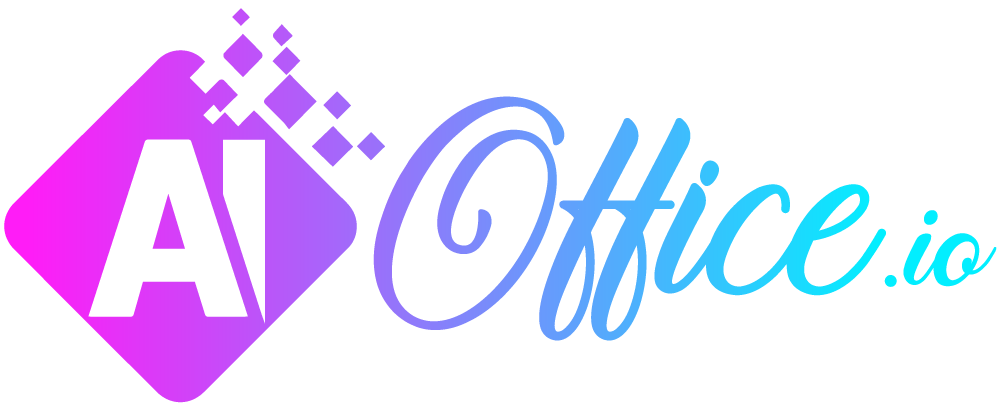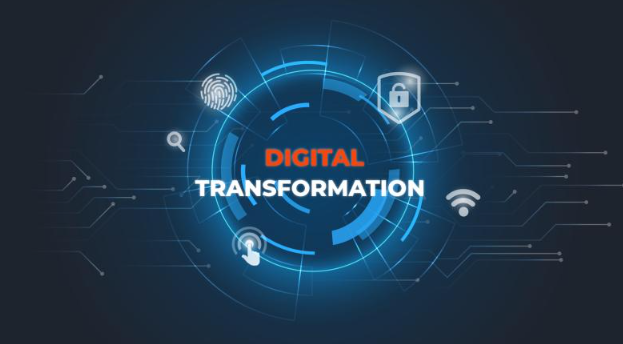What Are The 5 Key Stages Of the

Admin
AI Research Analyst | 16 May 2025Table of Content












Now everything has a very high demand. If a customer cannot find something available in one place, they quickly look for an alternative. Similarly, users always want applications to be working and active, so resilience plays a very important role. To help organizations understand user needs, AWS has introduced a Resilience Lifecycle Framework.
What Are The 5 Key Stages Of The Resilience Lifecycle Framework
First, let's discuss these 5 stages. They move in a circle, and first we set objectives, then we design an implementation process, then we evaluate and test and then we operate and at last we respond and learn. And after these 5 stages, we get what our customer wants.
What is the Resilience Lifecycle Framework
It's a life cycle that helps companies to grow in the online world. When they face an issue on their website, like one related to the network or another error in the application, it helps them to solve these issues. This framework is actually called a life cycle because this cycle breaks the process into 5 stages for objects to be tested and improved. So in detail we will discuss them in detail.
Stage 1: Set The Objectives
Stage 1 is that you need to have clear objectives for your business. If you don’t know what your goals are, you won’t achieve what you expect. Without clear objectives, you will just waste your resources.
In setting goals, companies must first understand where they are. A manufacturing company in Detroit spent two months only examining their existing processes before they would decide what to change. They sat down with employees, clocked production, and found errors. So this careful planning helped them set accurate goals.
Make specific and measurable objectives clear. Instead of "improve customer service," effective organizations develop targets like "reduce response time to under 2 hours" or "increase customer satisfaction ratings by 15%." In a recent poll of 500 business managers, researchers found that companies with clear digital goals have 3.5 times better chances of achieving successful outcomes than those with vague goals.
Timeline expectations must also be made during this stage. Open-ended projects that never seem to end take forever. The most successful companies set both short-term objectives (30-90 days) and more lengthy goals (6-18 months).
Budgets should be realistic and factor in the cost of unforeseen expenses. A retail chain under budgeted their digitalisation by 40% due to neglecting staff training and lost productivity during implementation as part of the costs. The smart and new modern companies now spend between 15% and 20% of the budget on unexpected expenditures.
Adding stakeholders in the development of objectives considerably increases success. Businesses with members from each department are 60% more satisfied with digital transformations than businesses where the IT or management teams establish objectives.
Stage 2: Design and Implementation Planning
After setting the objectives, the next step is to focus on design and implementation. This step turns your ideas into a concrete plan.
A system is only successful when it is prepared with the user's needs in mind. For example, if an application is designed for a patient, it should be modified based on what the patient is most interested in and what they demand the most. First, improvements should be made, and then, using creativity, additional features should be added on that basis.
The technology section should be such that it can adapt to modern things and features in the future. Companies that design applications only looking at present needs will find themselves repeating the same process every 18 months.
An Example…
Let's take an example of food-ordering websites. If a restaurant creates its website based on being available only in one city, it may be successful for a while. However, as their business grows, they will need to increase the size and sections of their application, which can cost four times more. If the application is built from the beginning with future needs in mind, such issues can be avoided.
Implementation planning calls for step-by-step, detailed procedures. Separating the process into small, manageable tasks prevents overwhelming teams. One manufacturing firm employed a "daily wins" strategy, where every day had a specific, possible objective. This minimised employee resistance and kept the project on track.
Training programs should be created before they are put into action. Organizations that design training content after system go-live have 40% greater error rates and take longer to adjust. Successful training contains multiple learning styles because individuals learn differently. One retail chain created brief videos, written documentation, and hands-on exercises and achieved 35% reduced adoption times compared to their earlier text-based training strategy.
Change management requires particular focus at this phase. A recent study indicated that 70% of the challenges of digital transformation are people's opposition to change and not technical. Effective companies appoint "change champions" in each department to help with concerns and to show new processes.
Resource allocation must be realistic. Companies tend to downplay the amount of time demanded from their highest performers. A financial services company found that their most productive employees spent 30% of their time on implementation over six months. This focus on implementation temporarily affected their regular work. Planning for this lost productivity is essential for achieving success.
Stage 3: Evaluation and Testing
The third stage is extensive testing and evaluation to confirm systems function as wanted before everything is fully set up. This stage usually decides whether a digital transformation is successful or not.
Testing must start with low-level functionality and build up to higher complexity. One ecommerce business tested their new platform initially with low-level product searching, then individual item purchases, and ultimately complex orders for multiple items, offers, and special shipping conditions. This approach identified 83% of the fatal flaws before launch.
User testing with actual people of varying skill levels is extremely valuable. A government agency conducting user testing on their new citizen portal had both technology-savvy users and users with little computer experience. The latter pointed out navigation issues that would have impacted thousands of citizens if not fixed prior to launch.
Performance testing under different conditions prevents expensive failures. A banking system that performed flawlessly during regular use crashed when tested with holiday volume transactions. By finding this out through testing, they prevented a disaster involving millions of customers.
Security testing is increasingly necessary as digital threats grow. Companies that conduct thorough security testing report 65% fewer incidents than those that rush this process. A healthcare provider discovered and fixed 13 potential data vulnerabilities during testing, potentially saving millions in breach-related costs.
Test result documentation provides useful reference materials. Companies that keep complete test records can fix problems 40% faster after deployment. Its because they have a clear record of changes and tests to refer to when issues arise.
Feedback mechanisms should be put in place at this point. One manufacturing firm developed a basic online form where employees could report problems during testing. It revealed 37 issues that technical testers did not spot because they were focusing on other parts of the system.
Stage 4: Operation and Maintenance
The fourth stage is about successfully running the new systems and keeping them in tip-top shape for maximum performance. This is where theory meets practice.
Launch strategies differ according to risk tolerance. Organizations that depend on critical operations usually start with a phased launch. They begin by focusing on non-critical functions or small groups of users.
A Scenario…
A hospital was able to successfully launch their new patient management system by beginning with outpatient services before expanding to emergency care. This minimised risk while enabling staff to gain confidence.
Early support resources should be increased during the initial operation. One retail chain doubled their help desk personnel for the initial month following adoption of their new inventory system. So, it skipped backups and angry workers during the busy adjustment time.
Use Cases
Monitoring systems need to monitor both technical performance and user experience. One airline found that their new booking system was technically working flawlessly, but was taking 20% longer for agents to operate. By monitoring both, they found and corrected interface issues that were slowing down customer service.
Preventive maintenance schedules avoid bigger issues. Scheduled maintenance companies have 70% fewer critical failures compared to companies that only repair when something is broken. An example of a manufacturing company implemented monthly system tests that lowered unscheduled downtime by 83%.
Documentation must be kept up to date but tends to fall behind due to its mundane nature. One insurance company designated a particular team member to update procedure documents whenever changes were implemented, which cut training new employees by 40%.
Feedback from users must be collected on an ongoing basis and resolved. One company had an easy system for employees to make recommendations on how to better manage their customers. In six months, they put 28 employee ideas into place that improved efficiency by 15%.
Stage 5: Response and Learning
The last stage is responding to problems, learning from past experiences, and continually improving systems and processes. This continuous stage differentiates top digital transformations from temporary alterations.
Regular review meetings help in detecting system performance and usage patterns. A financial institution reviews its online platform statistics every three months. Through the reviews, they have been able to detect seasonal patterns and reallocate resources in a way that improves customer satisfaction during peak times.
Improvement processes must be institutionalised. Companies with formal improvement systems have 3.5 times the number of improvements that are implemented compared to those with no such processes. A manufacturing company reduced the time to solve system problems from 45 days to 12 days with a "suggestion-to-solution" program.
Knowledge management systems retain lessons learned from implementation and operation. An energy provider built an electronic library of solutions to recurrent problems, cutting the time required to solve problems by 60% when similar issues arose.
Common Scenarios & Use Cases
Training refreshers assist in keeping proficiency levels up as systems change. Firms offering frequent training updates have 45% greater system use than firms that train only when implementing the system. A healthcare provider books short monthly training sessions that cover specific features or recent updates, keeping staff skills current without swapping them.
Measuring return on investment offers the justification for future projects. A transportation company closely monitored improvements in efficiency, cost savings, and revenue growth from its digital evolution. This information served to gain funding for future projects by providing a 230% return on initial investment.


